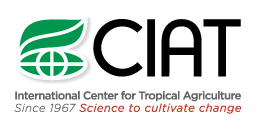HarvestPlus: On its way to reaching 1 billion people by 2030
In 2015 alone, HarvestPlus reached two million new farming households with nutritionally improved crops. This is part of its goal of reaching 100 million people by 2020, and 1 billion by 2030 with biofortified food. The rapid acceleration was partly due to the widespread introduction of zinc-rich crops in South Asia for the first time.
There, zinc deficiency is a major public health concern, affecting roughly 20% of the region’s 2.4 billion people, with women and children particularly vulnerable. Varieties developed and released under the program included pearl millet rich in both iron and zinc in India; zinc-rich wheat in India and Pakistan, and zinc-rich rice in Bangladesh and India.
Varieties released in 2015
- Vitamin A orange maize (Brazil, DR Congo, Ghana, Mali, Nigeria, Zambia, Zimbabwe)
- Zinc rice (Bangladesh, India)
- Zinc wheat (India, Pakistan)
- Iron pearl millet (India)
- Iron and zinc cowpea (India)
- Vitamin A orange sweet potato (Kenya, South Africa)
- Iron and zinc lentil (Bangladesh)
Variety release pipeline - 2016/2017
- Vitamin A yellow cassava (Cameroon, DR Congo, Nigeria, Cote D’Ivoire)
- Iron beans (Burundi, Colombia, DR Congo, Guatemala, Honduras, Rwanda, Uganda)
- Zinc rice (Bangladesh, Bolivia, Colombia, Panama)
- Iron and zinc lentil (India, Nepal)
- Vitamin A orange maize (Malawi, Rwanda)
- Zinc maize (Colombia)
Having shown the feasibility of breeding nutritionally improved crops, HarvestPlus has established new systems for multiplying and disseminating improved varieties.
This has required different interventions in different places. In Rwanda, for example, where beans with more iron are proving popular, HarvestPlus swaps normal bean seeds with farmers in exchange for the improved varieties. It then sells the farmers’ beans to the United Nations’ World Food Programme. To quickly increase stocks of improved wheat seed in the Himalayas of India, the program employed farmers to grow biofortified crops off-season. It means the improved seed is ready for planting when the main growing season arrives, reducing the lead-in time by as much as a year.

It has also involved engaging a range of private sector seed companies – and individual farmers – to multiply, store and market biofortified seed and grain. In Nigeria, for example, there are now more than 250 shops selling vitamin A-rich cassava to rural and urban consumers, identifiable by their distinctive orange signage. In several countries such as Rwanda, Nigeria, and India the program is supporting efforts to brand and package biofortified products to reach higher income consumers.
While continuing to focus on promoting the spread of biofortified crops in countries where the Program is already present, HarvestPlus is also developing partnerships in new countries keen to establish their own biofortification programs.
This is a major shift towards making biofortification sustainable and independent of HarvestPlus. It’s essential if we are going to reach 1 billion people by 2030.
Biofortification is now an intervention that is recognized and funded by organisations like the World Bank, the International Fund for Agricultural Development and the World Health Organization, who support crop improvement programs. It means HarvestPlus will increasingly be involved as a convener, providing expert advice to those establishing and running biofortification programs worldwide.
Wolfgang Pfeiffer

HarvestPlus is jointly led by CIAT and the International Food Policy Research Institute (IFPRI). The program has released over 130 biofortified crops in 30 countries in Africa, Asia and Latin America since its inception in 2004. Principal donors to HarvestPlus are the UK Government; the Bill & Melinda Gates Foundation; the US Government’s Feed the Future initiative; the European Commission; and donors to the CGIAR Research Program on Agriculture for Nutrition and Health.
Photo credits: HarvestPlus, AS Rao (ICRISAT)

